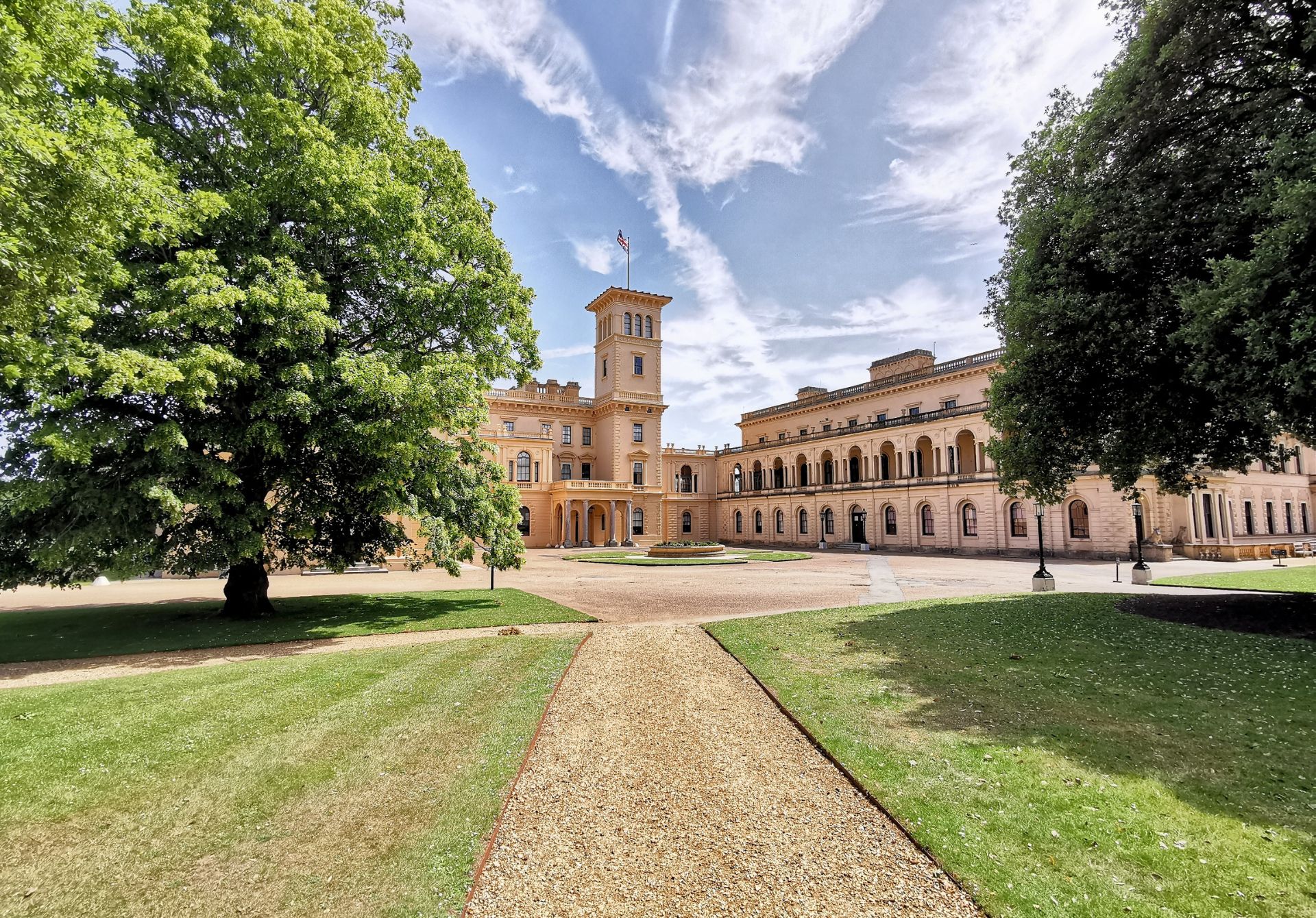Nestled on the picturesque Isle of Wight, Osborne House stands as a testament to the enduring legacy of Queen Victoria and Prince Albert. This magnificent royal residence, with its stunning architecture and lush gardens, offers visitors a glimpse into the private life of one of Britain’s most iconic monarchs. In this article, we’ll explore the rich history, architectural splendor, and cultural significance of Osborne House.
A Royal Vision
Osborne House was born out of Queen Victoria and Prince Albert’s desire for a private family retreat away from the pressures of court life. In 1845, they purchased the Osborne estate on the Isle of Wight, attracted by its mild climate and beautiful coastal views. Prince Albert, known for his keen interest in architecture and design, took charge of the project, working closely with master builder Thomas Cubitt to create a residence that would reflect both royal grandeur and domestic comfort.
Italianate Inspiration
The design of Osborne House was heavily influenced by the Italian Renaissance style, a favorite of Prince Albert. The exterior features distinct yellow-cream stone, ornate balconies, and terraces that evoke the charm of Mediterranean villas. This architectural choice was not merely aesthetic; it was a deliberate attempt to create a sunny, warm atmosphere reminiscent of the landscapes Albert and Victoria had admired during their travels in Italy.
The Royal Apartments
The interior of Osborne House is a marvel of 19th-century craftsmanship and design. The royal apartments, in particular, offer an intimate look into the daily lives of Queen Victoria and her family.
The Drawing Room
At the heart of the house lies the opulent drawing room, adorned with intricate plasterwork, gilded furnishings, and priceless artworks. This room served as the center of family life and social gatherings, showcasing the royal couple’s refined tastes and their passion for art collecting.
The Private Chambers
The bedrooms and dressing rooms of Queen Victoria and Prince Albert have been meticulously preserved, offering visitors a rare glimpse into the private world of royalty. Of particular note is the Queen’s bedroom, which remains largely unchanged since her death in 1901, serving as a poignant memorial to her enduring love for Prince Albert.
The Durbar Room
One of the most striking features of Osborne House is the Durbar Room, added in the 1890s as a testament to Queen Victoria’s role as Empress of India. Designed by Lockwood Kipling (father of author Rudyard Kipling) and Bhai Ram Singh, this extravagant banqueting hall showcases intricate Indian-inspired carvings, peacock motifs, and a stunning plaster ceiling. The room houses an impressive collection of gifts presented to the Queen by Indian princes and dignitaries, reflecting the complex relationship between Britain and its largest colony.
The Gardens and Grounds
The extensive gardens and grounds of Osborne House were as important to the royal family as the house itself. Prince Albert took a hands-on approach to landscape design, creating a series of themed gardens that complemented the Italianate style of the house.
The Terraced Gardens
Descending from the house towards the sea are a series of beautifully manicured terraced gardens. These include the Upper Terrace, with its ornate fountains and statuary, and the Lower Terrace, featuring colorful flower beds and exotic plants collected from across the British Empire.
Swiss Cottage
A short distance from the main house lies the Swiss Cottage, a playhouse built for the royal children. Here, the young princes and princesses learned practical skills such as cooking, gardening, and carpentry, reflecting Prince Albert’s belief in the importance of a well-rounded education.
Osborne’s Legacy
After Queen Victoria’s death in 1901, Osborne House was gifted to the nation by King Edward VII. It opened to the public in 1904 and has since become one of the most popular tourist attractions on the Isle of Wight, welcoming over 300,000 visitors annually.
Conservation Efforts
English Heritage, the organization responsible for managing Osborne House, has undertaken extensive conservation work to preserve this important piece of British history. Recent projects have included the restoration of the Durbar Room’s intricate plasterwork and the conservation of Queen Victoria’s private beach, which was reopened to the public in 2012 after decades of closure.
Osborne House stands as a unique and invaluable window into the private world of Queen Victoria and her family. Its blend of architectural grandeur, historical significance, and intimate personal touches offers visitors a multifaceted experience that goes beyond the typical royal residence. From the Italianate splendor of its exterior to the poignant reminders of Victoria’s devotion to Albert in her private chambers, Osborne House continues to captivate and educate visitors from around the world.
As we reflect on the legacy of Osborne House, we are reminded of the enduring impact of Queen Victoria’s reign on British history and culture. This remarkable property not only showcases the tastes and interests of one of Britain’s most influential monarchs but also provides insight into the social, cultural, and political dynamics of the 19th century. For anyone interested in British history, architecture, or the Victorian era, a visit to Osborne House offers an unparalleled opportunity to step back in time and experience the grandeur and intimacy of royal life in equal measure.

